Your cart is currently empty!
In the lower primary years of Grades 1 to 3, we want our children to learn simple literacy and numeracy – the 3Rs of Reading, wRriting, and aRithmetic.
What do we want to develop in the upper primary years of Grades 4 to 6?
In summary, we want to develop what teachers like to call “Higher Order Thinking Skills” (HOTS). Spelled out, this would be the following:
- From simple literacy to functional literacy
- Develop what is known as the 21st Century Skills
- Kids exploring in order to learn (Project-based learning or “Learning by Doing”)
- Kids learning together in groups (Collaborative learning)
- The “flipped” classroom where learners learn first amongst themselves before the teacher intervenes with a lecture
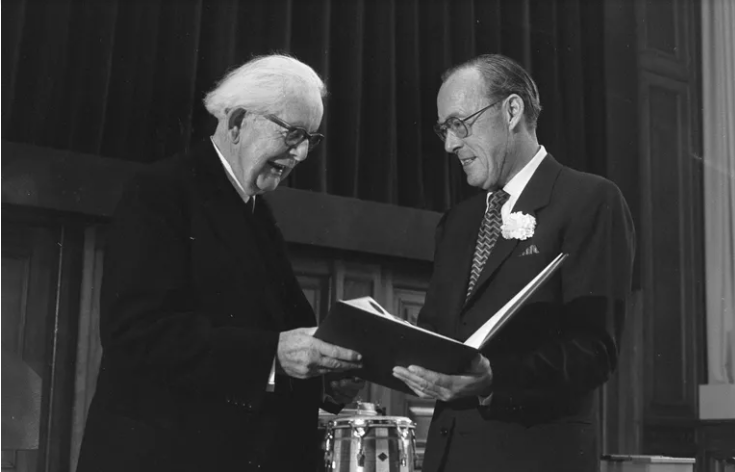
Piaget’s levels of learning
To provide a solid philosophy and framework for learning development, I turn to Jean Piaget, foremost among others, for this.
- Jean Piaget (1896-1980) was a Swiss psychologist known for his work on child development. Piaget’s theory of cognitive development and epistemological view are together called “genetic epistemology”. Piaget placed great importance on the education of children.
His theory of cognitive development looked at how children develop intellectually throughout the course of childhood. As the Director of the International Bureau of Education, he declared in 1934 that “only education is capable of saving our societies from possible collapse, whether violent or gradual.” Today, his theory of child development is studied in pre-service education programs and educators continue to incorporate his views on constructivist-based strategies in classroom teaching and schools.
Piaget outlined four stages of cognitive development in a child. The upper primary years of Grades 4 to 6 are in Stage 3: Concrete and operational stage (ages 7-11).
Jean Piaget’s theory of cognitive development suggests that intelligence changes or expands as children grow. A child’s cognitive development is not just about acquiring knowledge. The child has to develop or construct a mental model of the world and by the upper primary years and aged 7 to 11 years, this is where the child’s mind is ready for HOTS.
Jean Piaget’s Stages of Cognitive Development
- Sensorimotor stage: birth to 18-24 months
- Pre-operational stage: 2 to 7 years
- Concrete operational stage: 7 to 11 years
- Formal operational stage: ages 12 and up
The sequence of the stages is universal across cultures and follows the same invariant (unchanging) order. All children go through the same stages in the same order, but not all at the same rate according to Piaget.
Functional Literacy
What is Functional Literacy and how is this different from simple literacy??
Functional Literacy refers to the capacity of a person to engage in all those activities in which literacy is required to effectively function in his or her group and community. Functional literacy enables a child to continue to use reading, writing, and calculation for his or her own and the community’s development. (UNESCO Institute for Statistics). With the addition of numeracy and calculation to reading and writing, the HOTS start to be developed in a child.
The term functional literacy was initially defined for UNESCO by William S. Gray (The Teaching of Reading and Writing, 1956) as the training of adults to “meet independently the reading and writing demands placed on them”.
In Britain, there were the right-to-read movements in the 1970s that characterized functional literacy as the ability to: (1) read well enough to perform job activities successfully, and (2) understand printed messages. Over time, as societies developed both technical innovations and new language formats and tasks, the definition of functional literacy has been modified to meet the changing demands (encyclopedia.com).
Functional literacy is measured by a test that covers four elements:
- (1) Reading at level,
- (2) writing at level,
- (3) numeracy [the four operations of arithmetic – addition, subtraction, multiplication, and division, all at level], and
- (4) the ability to follow a set of written and verbal instructions.
In the Philippines, functional literacy is measured by a survey called FLEMMS (Functional Literacy, Education and Mass Media Survey). FLEMSS is conducted by the Philippine Statistics Authority (PSA) every five years and covers the three topics in its title. The test is given to individuals picked at random aged 10 to 64 years of age. It is a self-administered test. Reading and following instructions is part of how functional literacy is measured.
Age 10 would be the end of Grade 4 and this would be the right age to shift from simple literacy to functional literacy. Simple literacy should have been developed by the end of Grade 3 or earlier.
Parenthetically, this is why it is important to get all learners to complete the entire primary cycle (and later, the entire basic education cycle to Grade 12). When a child becomes functionally literate, there is a greater possibility that they will learn more and this will hopefully translate into more productivity as adults with more earning power as a consequence, more fulfillment in life, and better citizenship contributing to society. This is ideally achieved by the end of Grade 3 (lower primary) with the 3Rs plus the ability to process instructions.
What is the level of functional literacy in the Philippines? In the 2019 FLEMMS, about 91.6 percent of Filipinos aged 10 to 64 were functionally literate (PSA, 2019).

21st Century Skills
On top of developing functional literacy, the upper primary grades should be developing what is known as the 21st Century Skills. These are skills that, when blended with the subject areas of language arts, mathematics, science, and social studies, will develop a well-rounded child in academics.
The 21st Century Skills are divided into three parts: (1) Learning skills, (2) Problem-solving, and (3) Other skills learned in the high school years.
Problem-solving has four components:
|
The Other skills are developed in the higher grades (high school). These are:
- Higher-Order Literacy (JHS)
- Information
- Media
- Technology
- Life skills (SHS)
- Flexibility
- Leadership
- Initiative
- Productivity
- Social skills
- Higher-Order Literacy (JHS)
Returning back to the upper primary grades (Grades 4-6), the 21st Century Skills can be arranged in a progression chart where the skills developed in the previous grade become a scaffold for the next grade. This progression in learning at a slow but steady pace will allow a child to learn new concepts and new skills and practice this over the course of a school year to develop proficiency or mastery.
21st century skills progression chart
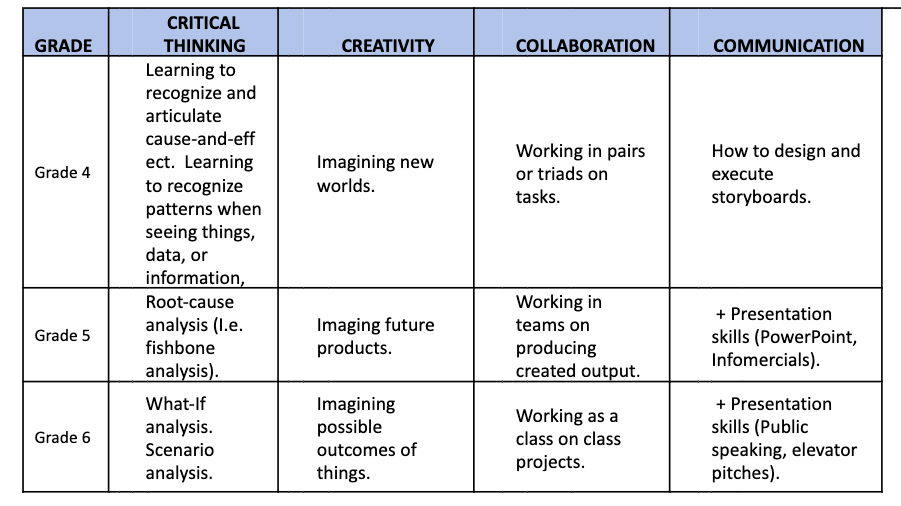
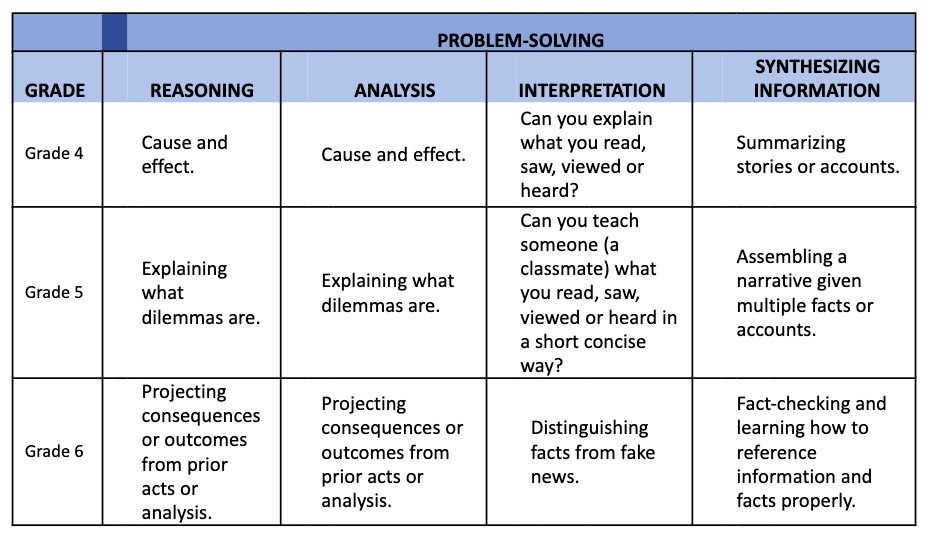
Are our teachers prepared for this?
To be able to a child through the process of learning the different 21st Century Skills, a teacher should himself or herself be practicing the same skills in their teaching. The times demand that teachers have got to get themselves prepared in this brave new world. But it will mean a lot of unpacking of old learning and old habits for the new.
Beyond the lower primary years, simple literacy is not sufficient. Functional literacy is the real measure of literacy. And when we add the 21st Century Skills, literacy and numeracy is expanded to include media and computer/computational literacy. These are skills teachers will have to develop within themselves if they expect to develop these in children.
Secondly, the 21st Century Skills were formulated only after many teachers were well into their basic education or even after their basic education. They may not have been exposed to many of these skills in their formative years, i.e. when they themselves were in the primary years and into secondary education, although the topic of HOTS has been around for some time and was studied in their pre-service education and training. Or, if they were exposed to these 21st Century Skills in their pre-service education, they may know them conceptually but not practice them extensively and hence internalize them. (The key to knowing something well is the ability to innovate on that subject. Are teachers able to innovate present the 21st Century Skills in the classroom using new and different methods, processes, and tasks with their learners?)
This is going to be a challenge then for many of the older teachers. The 21st Century Skills places a lot of the drivers of learning in the hands of students (the learners). Learning is driven by discovery, by learning by doing, by collaboration with peers on shared tasks and projects, and less on lectures. Research online on the internet will largely supplant the traditional textbook. This is where teachers will have to change their orientation towards their students and how they will manage the classroom. They will have to shift from being the authority in the classroom to being a guide and a mentor letting children take the lead in the learning process.
The Importance of Upper Primary
Because of functional literacy and the start of the development of the 21st Century Skills, the upper primary is an important level in a child’s education.
As a child reaches the age of 11 (Grade 6), Dr. Doris Twitchell Allen, a child psychologist and the founder of CISV (Children’s International Summer Villages), wrote that an 11-year old child anywhere in the world has the innate capacity to reason and learn from his or her surroundings and peers and elders, and begin to form independent judgments but are too young to have picked up their parent’s biases. This is consistent with Jean Piaget’s Stages of Cognitive Development.
In a world of increasing social media, fast-changing developments, increasing complexity, volatility, uncertainty, and ambiguity, we need to develop children who can think critically, analytically, and creatively. This, so they can learn to judge things for themselves and make good decisions in their own lives. The upper primary years is a good place to start to build a strong foundation in this.
Let us ensure that the upper primary years are good years of learning for our children.

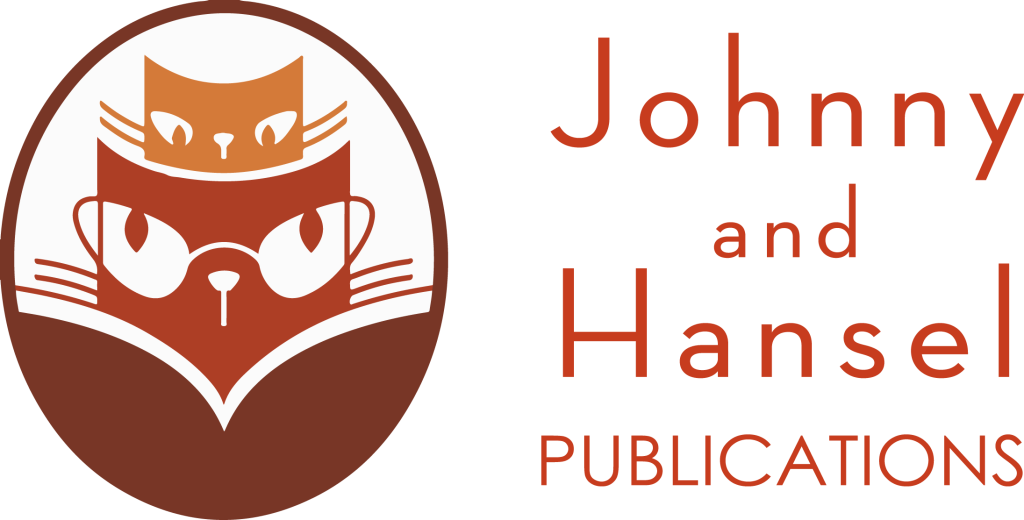
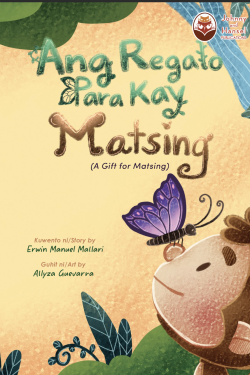
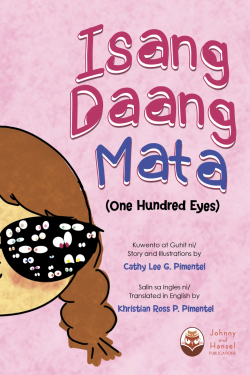
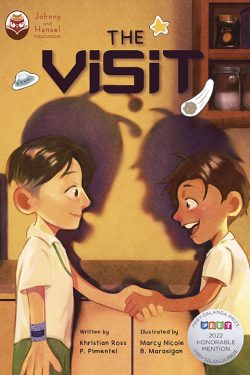
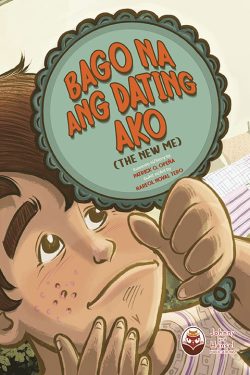


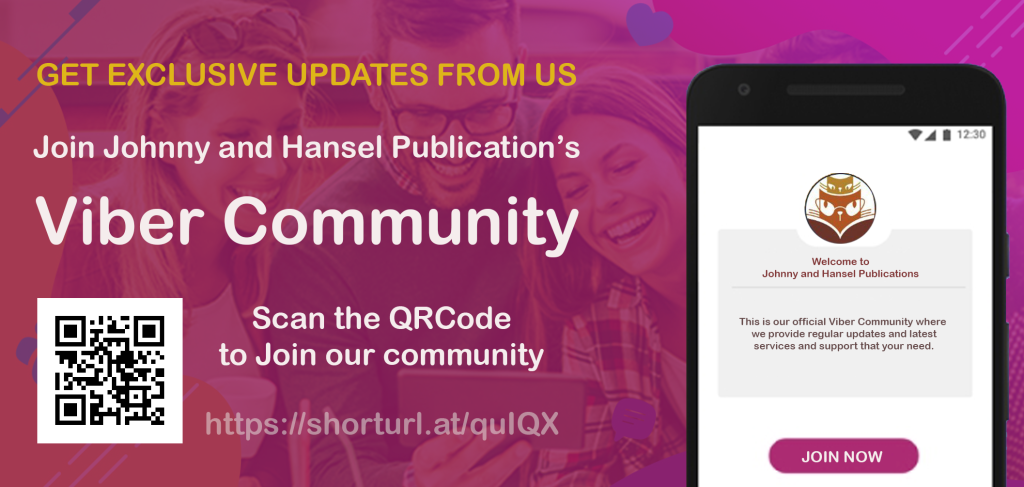
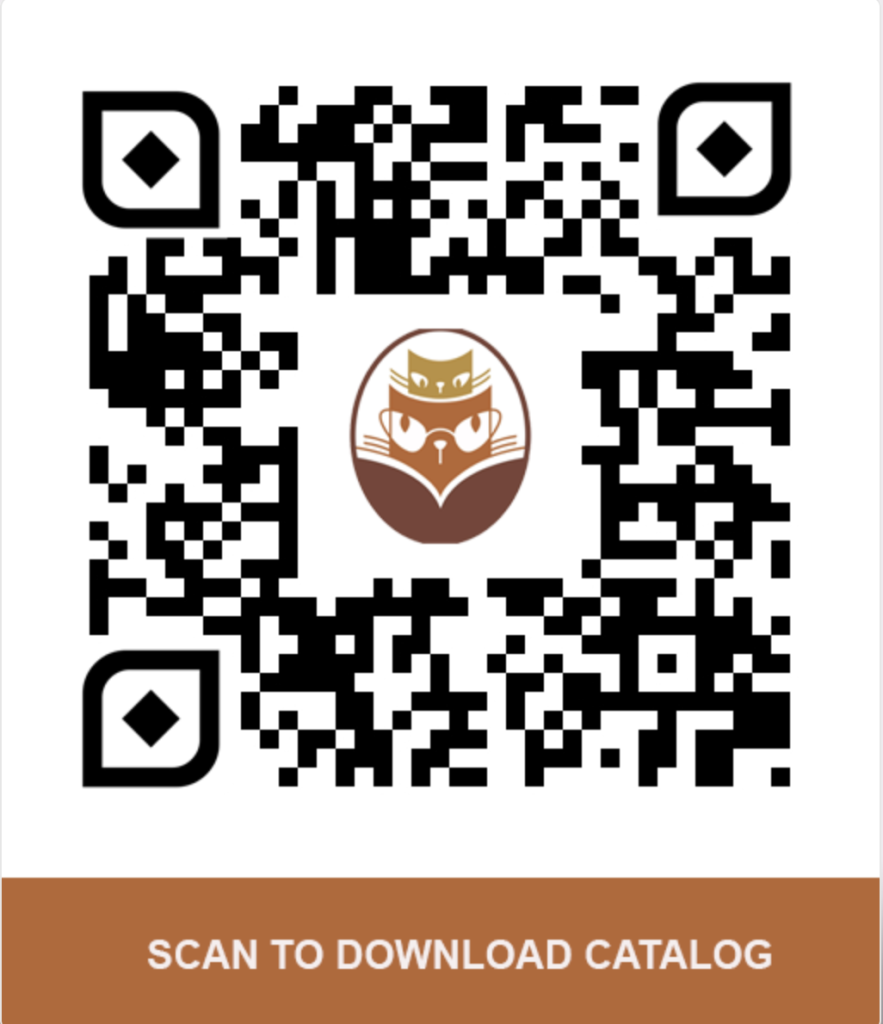
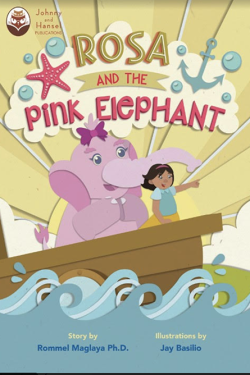
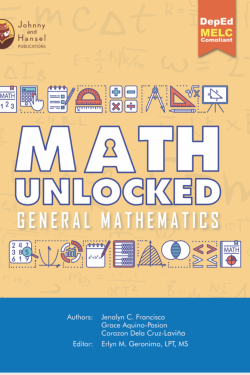
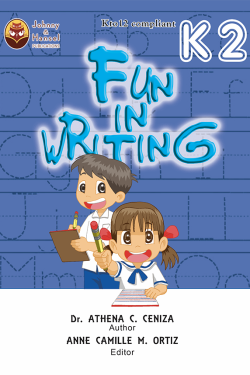
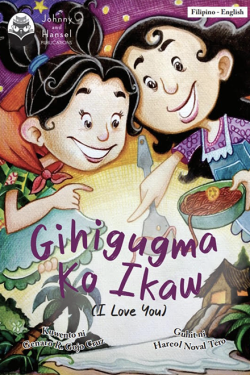
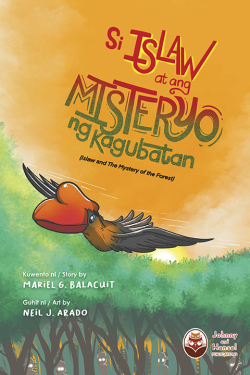
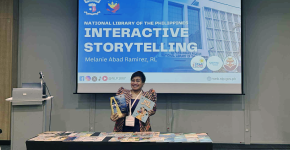
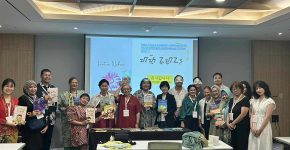


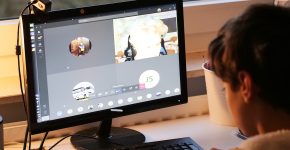
what is your mode of payment